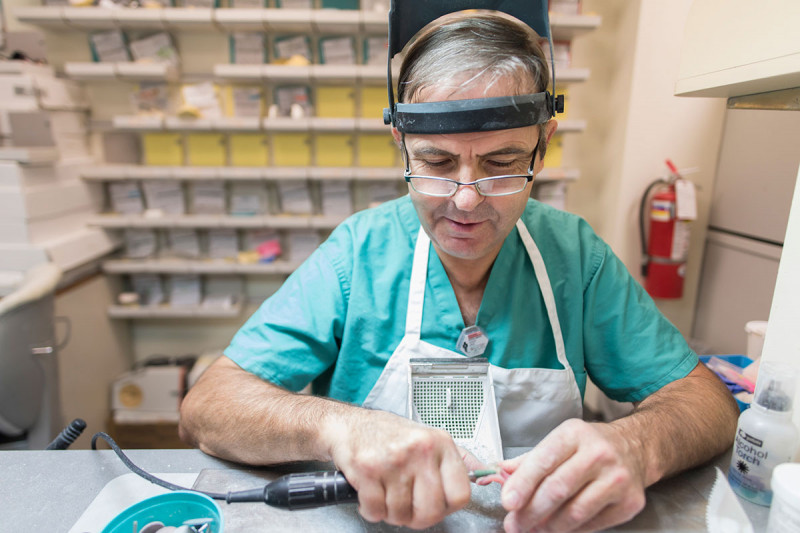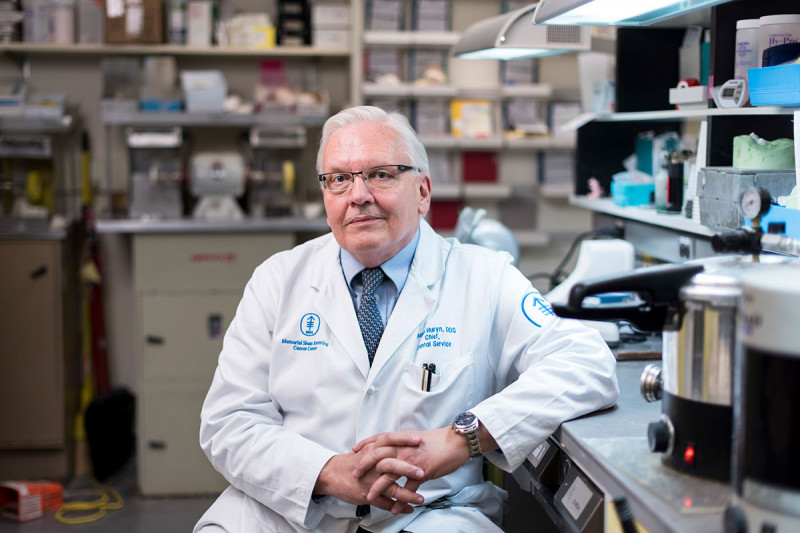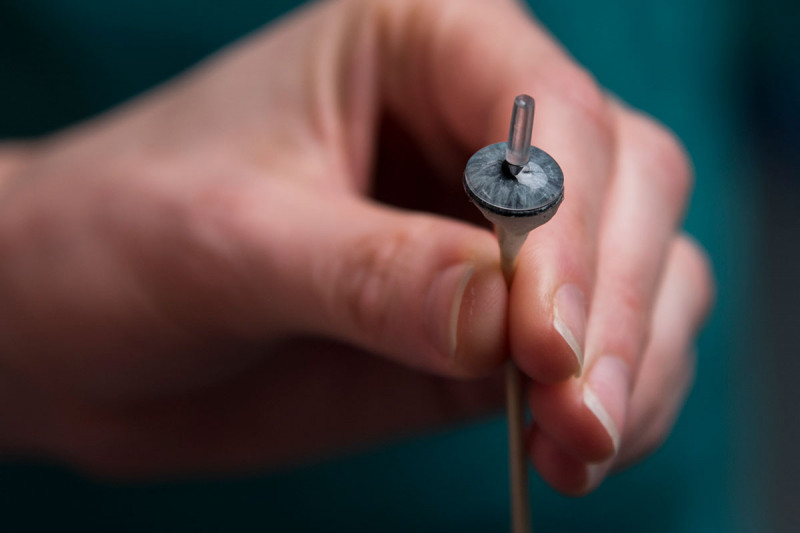MSK's Dental Service Aims to Make People Whole Again
Down a bustling third-floor corridor of Memorial Hospital is a room one might not expect to see in a cancer center — one full of dental exam chairs, plaster jawbone impressions, and silicone dentures. And the men and women in white coats scurrying around inside aren’t oncologists; they’re dentists, of a very special sort.
For Frank Castagna, who came to Memorial Sloan Kettering last winter desperately seeking a fix for a hole in his soft palate, they were also miracle workers. The 58-year-old schoolteacher, who had already survived leukemia, came to MSK and was diagnosed with squamous cell carcinoma in the summer of 2015.
MSK surgeons removed his lymph nodes, part of his soft palate and tongue, and a tonsil. Despite surgeons’ hopes, the palate wound never healed. Mr. Castagna could barely speak and ate mostly via a feeding tube. “I wanted to go back to work, and there was no way I could teach with this nasal, hard-to-understand voice,” he says. “Can you imagine, with high school students?” So he turned to MSK’s Dental Service. The dental oncologists and maxillofacial prosthodontists on the team are specialized dentists who treat — and create stunningly lifelike prostheses for — patients with dental issues and also those with severe problems of the eyes, ears, nose, and other soft tissues of the face.
Chief Joseph Huryn fit Mr. Castagna with a temporary prosthesis, which included a thick plastic section that covered the roof of his mouth, in time to take his wife, Nancy, to a New Year’s Eve dinner. “That appointment was the first time we heard my voice again,” Mr. Castagna says. “That was huge.”
The temporary piece helped him go back to his high schoolers in February, the same month that his oncologists declared him cancer free. In July, Dr. Huryn gave Mr. Castagna his permanent obturator, a device that fits into the hole in his soft palate, making his voice rich and his eating simpler. He’s since begun his first full year of teaching since the operation. “Literally and figuratively, Dr. Huryn helped me regain my voice,” Mr. Castagna says. “He gave me everything.”
Filling in the Gaps
MSK’s mission is twofold: curing people of cancer and returning them to as normal a life as possible. By replacing a jaw that broke off in pieces after chemotherapy, filling a hole where a nose once sat, or repairing a lower lip that sags over a missing jawbone, the doctors on the Dental Service are among the many reconstructive specialists at MSK who are making people whole again.
“This is not your typical drill-and-fill operation,” Dr. Huryn says as he stands over a table of astonishingly realistic fake body parts, prostheses that are individually designed for specific patients for whom reconstructive surgery is not an option. There are eyes complete with lids and feathery lashes, patches of skin mottled with sun spots, freckled noses, even finely curved ears. A few feet away, a workstation is topped with plaster nose impressions and acrylic jawbones. Boxes lining the walls are emblazoned with labels like “OCULAR JARS” and “FACIAL GLUE.”
Cancer can be devastating to dental health as well as to physical appearance — particularly in people with head and neck cancer. Radiation to the area decreases blood supply to the bones that support the teeth, leaving them prone to breakdown; decreased function of salivary glands can lead to a lifelong battle with tooth decay; and surgical removal of an oral tumor may also require removal of dental bone.
Dental health can also have a serious impact on patients’ chances of recovery. For patients receiving bone marrow transplants, for example, the treatment temporarily wipes out the immune system, making oral infections potentially life threatening.
The service, which was established at MSK in 1934, typically sees people who are dealing with the side effects of cancer or its treatment, but they also help those suffering from birth defects or trauma. Dr. Huryn and his team of 25 — which includes dentists; oral surgeons; endodontists, who frequently perform root canals; and medical artists — collectively see more than 2,200 patients every year.
Sitting at his desk, Dr. Huryn clicks through photos of patients that can be difficult for an outsider to view: mangled gums, retinal tumors, missing lower jawbones, empty eye sockets. Though the images are startling, he maintains an air of delight in relating each patient’s complex treatments — and the ways in which the Dental Service was able to get them back to feeling like themselves.
“Sometimes a patient desperately misses going to the supermarket without being stared at,” says Dr. Huryn. “Another guy just wants to be able to put his glasses on top of both ears. They should be able to have those simple pleasures. What we do here is provide a quality-of-life service. And we’re proud to do it.”
A United Front
Though each patient’s case is unique, there is a standard procedure: Before a patient comes in for a visit, the team works closely with their counterparts on the Surgery Service, including oncologists and surgeons, to plan dental procedures and ensure patients are in good dental health before cancer treatment even begins.
Next, they bring patients in for x-rays to assess any internal oral issues. If prostheses are needed, they use those images and CT scans to build models for areas including palates and jawbones and make adjustments as needed. Then, the team makes the final prostheses out of materials like soft or hard silicone. Some prostheses have parts that are permanently implanted; some are removable, perfectly snapping into place.
Marjorie Golden, the service’s anaplastologist, or medical artist, delicately and precisely paints prostheses to match patients’ features such as skin tone and eye color. She says she “could never even try to put into words what it means to help people who are on this kind of journey. I’m very blessed to help them along in regaining part of their lives.”
“The work that we do is very complex on a technical level, but our goals are very simple,” Dr. Huryn adds. “We’re not treating the cancer — we’re focused on making our patients’ lives as high quality as possible.”







